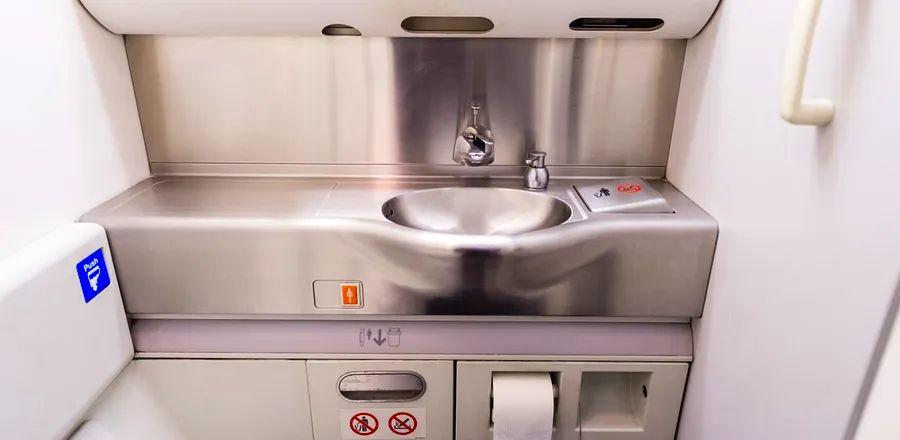An Essential Update for Airplane Lavatories

Traveling today can be frustrating and uncomfortable even for those without disabilities, but for passengers with disabilities, the experience often turns into a challenging ordeal or becomes entirely unmanageable. Fortunately, one aspect of in-flight service is set to improve for these travelers.
Following years of evaluations that trace back to the Obama administration, the Department of Transportation (DOT) declared on Wednesday that it has finalized regulations mandating new narrow-body aircraft to feature accessible restrooms. This decision, amending the Air Carrier Access Act (ACAA) of 1986, represents a significant advancement in facilitating air travel for passengers with disabilities.
Currently, twin-aisle, wide-body planes (often used for long-haul international flights) are required to have accessible bathrooms. This new legislation will extend that requirement to single-aisle planes with at least 125 seats. The lavatory must allow a person with a disability and an assistant to navigate freely and ensure privacy comparable to that of able-bodied travelers.
This affects popular aircraft like the Boeing 737 and Airbus A320 families, commonly used by major U.S. airlines. According to the DOT, a significant portion of domestic flights in the U.S. covering distances between 1,500 and 3,000 miles are operated using narrow-body planes (86 percent in 2021). Moreover, as aircraft become more efficient, single-aisle planes are increasingly taking on longer international flights.
For example, a 3,600-mile journey across the Atlantic from New York to Paris on JetBlue, lasting over seven hours, is serviced by a single-aisle Airbus A321LR. Like many airlines operating this model, JetBlue lacks accessible restrooms. The A321LR can travel up to 4,000 miles, with flight durations reaching eight hours from takeoff to landing.
“The inability to safely access and use the restroom during long flights can affect the dignity of passengers with disabilities, discouraging them from flying and limiting their independence and travel freedom,” stated Transportation Secretary Pete Buttigieg. “This final rule tackles a human rights concern.”
Along with larger restrooms, the DOT will mandate several additional features, such as grab bars, accessible faucets and controls, call buttons and door locks that are easy to reach, minimal obstruction for onboard wheelchairs, toe clearance, and a visual barrier for privacy.
Two other groups are also expected to benefit from the DOT regulations. “We believe that this rule will also indirectly assist larger passengers and families traveling with small children,” Buttigieg noted.
However, this ruling won’t be implemented immediately; it’s anticipated that it will take over a decade for airlines to comply. The ACAA amendment will apply to new single-aisle aircraft ordered by airlines starting in 2033 or delivered from 2035 onward. Moreover, airlines won’t need to retrofit current planes unless the lavatory is replaced during an interior upgrade.
Nonetheless, this news brings relief to Cory Lee, an accessible travel writer and wheelchair user.
“I am absolutely thrilled that accessible restrooms will soon be more prevalent on airplanes, making flying significantly easier for many individuals with disabilities; it could potentially allow many to fly for the first time,” Lee shared in an interview with Dinogo.
In the finalized regulations, Secretary Buttigieg recognized the “degrading” experiences passengers with disabilities face while flying, which include, among other things, the need to hold bodily fluids or resort to using adult diapers and catheters.
For Lee, a globetrotter who has journeyed to 43 countries across all seven continents, this has been his routine. “Usually, I begin to dehydrate myself about 24 hours before a flight and limit my food intake about 48 hours ahead,” he explained. “I do all this to avoid needing the restroom during the flight.”
Although accessible lavatory options are available for single-aisle planes, airlines have largely opted out in favor of adding extra seats or expanding galley space. This update follows closely on the heels of Delta Flight Products, a subsidiary of Delta Air Lines, unveiling a prototype of a new airplane seat that would allow travelers who use wheelchairs to bring their wheelchair on board. Currently, passengers must check in their wheelchairs, be transported to the gate via airline-provided wheelchairs, and then transferred to their seats, where those reliant on their wheelchairs must remain for the entire flight. If approved and produced, this new seat design could revolutionize travel for wheelchair users, complementing the introduction of accessible lavatories.

1

2

3

4

5
Evaluation :
5/5